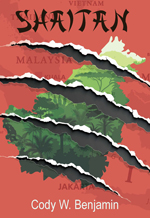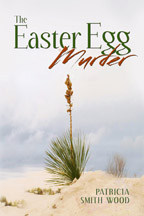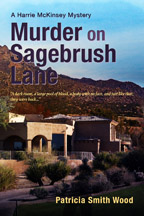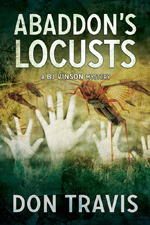RJ the Story Guy (aka RJ Mirabal) is a former high school teacher who began a writing career in earnest in his retirement years. After publishing a fantasy series set in an alternate New Mexico, his adventurous rescue dog inspired a new direction for RJ’s writing. Trixie Finds Her People (Trixie the Brown Dog, Book 1), released in 2019, is his debut children’s book. You’ll find RJ and Trixie on their websites at RJMirabal.com and TrixieTheBrownDog.com, on their Facebook pages at RJMirabalAuthor and TrixieTheBrownDog, and on Instagram and Twitter. Read about RJ and his fantasy series in his 2015 and 2017 interviews for SouthWest Writers.
 What is your elevator pitch for Trixie Finds Her People?
What is your elevator pitch for Trixie Finds Her People?
The ordinary life of a rescue dog may not seem adventurous—unless you’re that dog. When an uncertain older couple and their granddaughter Abigail adopt Trixie, their lives turn into a series of wonderful, humorous, and sometimes scary experiences. Chapters touch on everything from surviving frightening Big Booms of lightning to setting out on challenging fantasy episodes in Trixie’s dreams. Every day stirs the dog’s curiosity and sharpens her intelligence. Trixie Finds Her People launches readers (middle elementary ages 8 and up) on a journey of discovery, facing fears, and finding love. Interaction with Mommy, Poppa, and Abigail adds richness and new sources of fun for the lively, mixed-breed Brown Dog.
This is a departure from your previous projects of speculative fiction (not only in genre but audience). What challenges did this new direction pose for you?
I had to force myself to write more simply, use shorter sentences and paragraphs, and create imagery that was more immediate and straight-forward. I couldn’t indulge in the kind of inference and sophisticated vocabulary like I had in my Rio Grande Parallax series. Actually, that turned out to be a very worthwhile endeavor because I feel my writing is now more appealing. Writing this book challenged me to create clear images, dialogue, and action with more impact. Of course, there’s the obvious need to view everything I write through the eyes, ears, and imaginations of young readers. Somehow, I believe that should benefit all my writing from this point on.
Tell us how the book came together.
It started with my experience with my newly adopted rescue dog, Trixie. She is so bright, inquisitive, and funny that the idea of sharing most of my experiences with readers came to me within a few months of adopting her. I started observing her in terms of creating character and finding story lines in her explorations, personality, and antics. Very soon I thought it would be necessary to view the story from her point of view while still including human dialogue which she, logically, can’t fully understand but could sense the feelings behind human communication. It is not first person, but everything is presented from her point of view.
The writing process, once started, fell neatly into chapters each about 8-15 pages long, easily written in a sitting. Those episodes merged into a loose plot that took me through Trixie’s progress from being raised outdoors with 14 other dogs (and her 8 puppies) to becoming the sole animal living indoors with three people. Her life blooms in this new situation as each chapter adds more range to her lively, strong personality. Since I don’t usually write in long, day-after-day sessions, the episodic nature of the story made the writing easier when life interrupted. In less than a year, I had the first draft. From there I shared chapters with my critique group to begin the editing/revising phase before I prepared the book for publication.
What makes this book unique in the children’s market?
I believe a significant number of books like this either take on strong elements of fantasy or they are strict nonfiction or they become vehicles to explore current social justice issues. I decided I wanted a book that had a gentle, family friendly approach that inferred finding simple joy in life is as important as social significance. And, as for fantasy, I thought a little would be fun, so I wrote a few chapters that enter Trixie’s mind as she has various dreams. Dogs sleep a lot and the actions and noise they demonstrate during sleep suggest they have lively dreams, so I created fantasy stories that were suggested by incidents in her daily life.
Why did you use a pen name for Trixie Finds Her People?
I spent a lot of time promoting my adult fantasy trilogy as a story definitely for mature readers with a fairly sophisticated vocabulary. Since this new book is aimed at younger and family audiences, I had to separate it from the perception of my previous writing, so I went with the friendly pseudonym of RJ the Story Guy. I’m not going to great lengths to cover who I am, because I’m promoting the book to my earlier readers, but I’m also gathering new readers through promotions that emphasize this new persona.
What was your favorite part of putting this project together?
Putting myself in Trixie’s body and mind and then reflecting her joy for life was my favorite thing. Of course, some of the episodes have scary moments, so I had to think how a dog would react to something like a thunderstorm and fireworks (which play a role in two of the most important chapters in the book). It’s always exciting to leave my ordinary life behind and enter another one when I write—one of the joys of writing which you can’t put a price on.
You have played the hammered dulcimer for years. Has the creativity and discipline you employ as a musician (or music itself) helped you in your writing journey?
Being a musician is another channel of self-expression, but it is through the creation or re-creation of sounds presented with emotion. Writing is the process of creating and re-creating events, emotions, and people through words. Similar, yet through different means of expression. Both writing and music require serious commitments of time, imagination, and revision. In the end, both are usually shared with others. You end up putting your deepest self out in front of other people. Music, unless recorded, is very transitory. But writing is for the ages, even if what we have written ends up collecting dust on shelves somewhere in forgotten rooms.
What writing projects are you working on now?
I have completed the first draft of a dragon story for middle-grade children, ages 10-14. In my Rio Grande Parallax adult fantasy, I created all my own creatures as well as used actual animals who happen to communicate like humans. Recently, I decided there was little point in resisting some durable creatures that already have a huge following among fantasy readers, such as dragons. Automatically, when people see a dragon on the cover and in the title of a book, they are intrigued. So, why overlook that attraction to acquire readers? I came up with a unique twist that I have explored with a dragon as one of my main characters and a fifteen-year-old farm boy as my other lead character.
Trixie continues to develop her personality and reactions to the world, so there are more dog stories to tell, both real and imaged. So far, response by readers has been positive, so why not tell more stories about Trixie and her people?
 KL Wagoner (writing as Cate Macabe) is the author of This New Mountain: a memoir of AJ Jackson, private investigator, repossessor, and grandmother. Kathy posts to a speculative fiction blog at klwagoner.com and writes about memoir at ThisNewMountain.com.
KL Wagoner (writing as Cate Macabe) is the author of This New Mountain: a memoir of AJ Jackson, private investigator, repossessor, and grandmother. Kathy posts to a speculative fiction blog at klwagoner.com and writes about memoir at ThisNewMountain.com.













 When the Heart Is Right (Lagan Press, 2019) by Parris Afton Bonds: When Washington D.C. socialite Alessandra O’Quinn is diagnosed with tuberculosis, she must leave everything she knows to seek a cure in the dry desert air of New Mexico. In her new home, Alessandra meets the local Taos Indians and shaman Manuel Mondragon. As she learns how to heal her body, she finds herself fighting to save her true self, as well as her heart. She soon joins the fight against the Bureau of Indian Affairs for the rights to Blue Lake, where the tribe believes their ancient culture was created out of the sacred waters. Set in 1920s New Mexico, this is a story of politics, male domination, racism, and love against all odds. Available on
When the Heart Is Right (Lagan Press, 2019) by Parris Afton Bonds: When Washington D.C. socialite Alessandra O’Quinn is diagnosed with tuberculosis, she must leave everything she knows to seek a cure in the dry desert air of New Mexico. In her new home, Alessandra meets the local Taos Indians and shaman Manuel Mondragon. As she learns how to heal her body, she finds herself fighting to save her true self, as well as her heart. She soon joins the fight against the Bureau of Indian Affairs for the rights to Blue Lake, where the tribe believes their ancient culture was created out of the sacred waters. Set in 1920s New Mexico, this is a story of politics, male domination, racism, and love against all odds. Available on 



